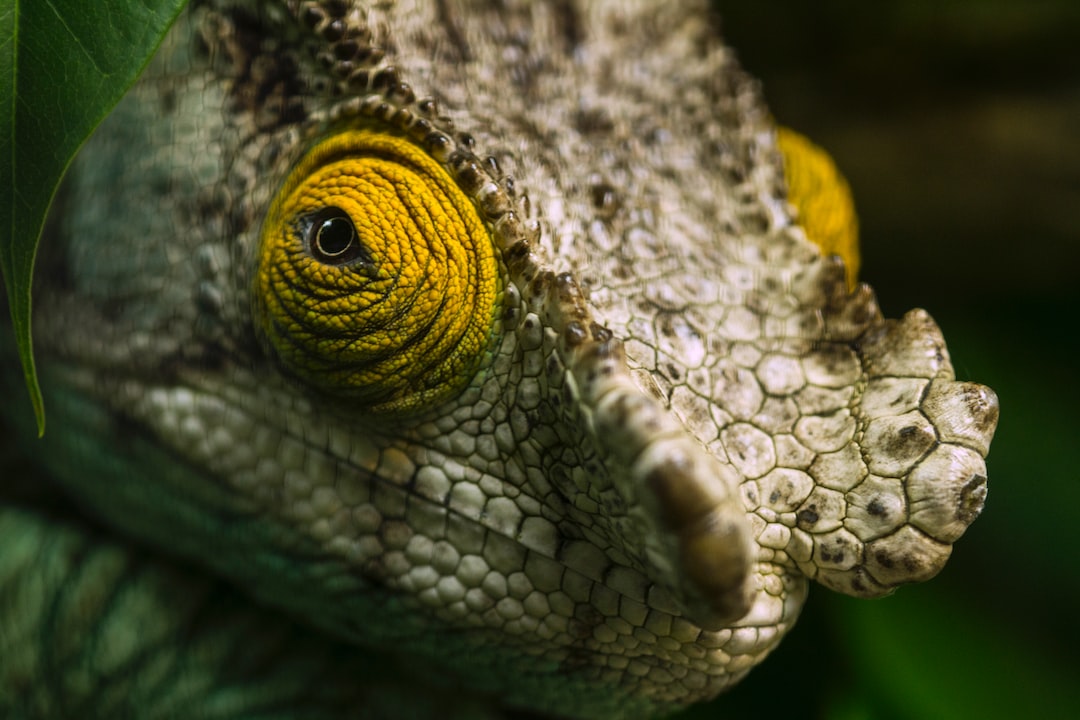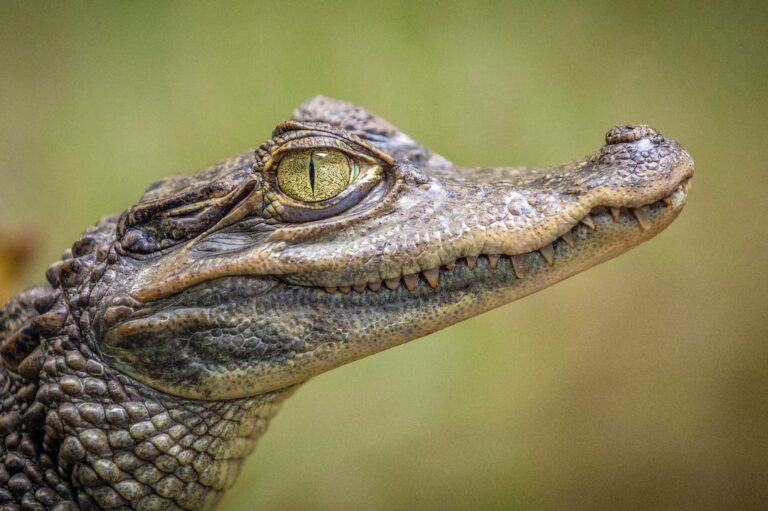Why Do Chameleons’ Eyes Pop Out?
Chameleons are fascinating creatures known for their unique ability to change color and blend into their surroundings. They are found in various parts of the world, primarily in Africa, Madagascar, and parts of Asia. Chameleons have long been a subject of fascination for scientists and researchers due to their incredible vision. Understanding chameleon vision is important not only for studying these creatures but also for gaining insights into the evolution of vision in general.
Table of Contents
Understanding Chameleon Vision: An Overview
Chameleon vision is quite different from human vision. While humans have three types of color receptors in their eyes (red, green, and blue), chameleons have four types of color receptors, allowing them to see a wider range of colors. This gives them the ability to perceive colors that are invisible to humans, such as ultraviolet light. Chameleons also have the ability to see in both monocular and binocular vision, meaning they can focus on objects with both eyes or use each eye independently.
Color vision is crucial for chameleons as it helps them communicate, find mates, and locate prey. The ability to change color is also closely linked to their vision. Chameleons can change their skin color by manipulating specialized cells called chromatophores. These cells contain pigments that can expand or contract, allowing the chameleon to change its appearance. By changing color, chameleons can blend into their surroundings and avoid predators or attract potential mates.
The Anatomy of a Chameleon’s Eye
A chameleon’s eye is a complex structure that allows for its unique vision capabilities. The eye consists of several parts, including the cornea, iris, lens, retina, and optic nerve. The cornea is the transparent outer layer that protects the eye and helps focus light onto the retina. The iris controls the amount of light entering the eye by adjusting the size of the pupil. The lens focuses light onto the retina, which contains specialized cells called photoreceptors that detect light and transmit signals to the brain via the optic nerve.
One of the most distinctive features of a chameleon’s eye is its ability to move independently. Each eye can rotate and move in different directions, allowing the chameleon to have a wide field of vision. This is particularly useful for hunting as it allows the chameleon to spot prey from different angles without having to move its body. The eyes are also capable of bulging out of their sockets, which further enhances their field of vision.
The Purpose of Chameleons’ Eye Bulging
Chameleons have the unique ability to bulge their eyes out of their sockets. This may seem strange, but it serves an important purpose. When a chameleon bulges its eyes, it increases the size of its visual field, allowing it to see a wider range of objects and potential threats. This is particularly useful in their natural habitats, where they need to be constantly aware of predators and prey.
The ability to bulge their eyes also helps chameleons focus on specific objects. By extending their eyes forward, they can increase the depth perception and accurately judge distances. This is crucial for hunting as it allows them to accurately strike at their prey. Additionally, the bulging of the eyes helps chameleons communicate with each other and establish dominance within their social groups.
The Science Behind Eye Popping in Chameleons
While bulging the eyes provides chameleons with an extended field of vision, they can take it a step further by popping their eyes out even more. This may seem alarming, but it is a natural behavior for chameleons. When a chameleon pops its eyes out, it allows for even greater focus and precision in locating prey or avoiding predators.
The mechanism behind eye popping is quite fascinating. Chameleons have a specialized bone structure behind their eyes called the hyoid bone. This bone is connected to the muscles that control eye movement. When a chameleon pops its eyes out, the hyoid bone moves forward, pushing the eyes out of their sockets. This allows the chameleon to have an even wider field of vision and better depth perception.
How Chameleons Use Their Eyes to Hunt and Survive
Chameleons rely heavily on their eyesight for hunting and survival. Their unique vision allows them to locate prey from a distance and accurately strike at it. Chameleons have excellent depth perception, which helps them judge distances accurately and accurately aim their tongue at their prey. They can also focus on small moving objects, such as insects, with great precision.
In addition to hunting, chameleons use their eyes to avoid predators. Their ability to see in different directions allows them to keep an eye out for potential threats while they are feeding or resting. Chameleons are known for their ability to blend into their surroundings, but their eyes play a crucial role in detecting predators and allowing them to escape quickly.
The Role of Eye Bulging in Chameleon Communication and Social Behavior
Eye bulging is not only important for hunting and survival but also plays a significant role in chameleon communication and social behavior. Chameleons use eye bulging as a way to communicate with each other. By bulging their eyes, they can signal aggression or dominance to other chameleons. This behavior is particularly common during territorial disputes or when competing for mates.
Eye bulging is also used in chameleon social behavior. When two chameleons encounter each other, they may engage in a “staring contest” where they both bulge their eyes as a way of asserting dominance. The chameleon with the most impressive eye bulge is usually seen as the dominant individual. This behavior helps establish a hierarchy within the social group and reduces the need for physical confrontation.
The Connection Between Stress and Chameleon Eye Popping
While eye bulging is a natural behavior for chameleons, excessive eye popping can be a sign of stress or discomfort. Chameleons may pop their eyes out when they feel threatened or anxious. This behavior is often seen in captivity when chameleons are exposed to unfamiliar environments or handled improperly.
To reduce stress in chameleons and prevent excessive eye popping, it is important to provide them with a suitable habitat that mimics their natural environment. This includes providing ample hiding spots, proper lighting, and maintaining appropriate temperature and humidity levels. It is also important to handle chameleons gently and avoid sudden movements that may startle them.
The Importance of Proper Care for Chameleon Eye Health
Proper care is essential for maintaining the health of a chameleon’s eyes. Regular check-ups with a veterinarian who specializes in reptiles are recommended to ensure that any potential eye problems are detected early on. It is also important to provide a balanced diet that includes foods rich in vitamin A, as this vitamin is crucial for maintaining healthy eyes.
Maintaining proper humidity levels in the chameleon’s habitat is also important for eye health. Dry air can cause the eyes to become irritated and lead to infections or other eye problems. Regular cleaning of the habitat and providing clean water for drinking and misting can help prevent eye infections.
Chameleon Eye Disorders and Diseases: Symptoms and Treatment
Chameleons are susceptible to various eye disorders and diseases, some of which can be serious if left untreated. One common eye problem in chameleons is conjunctivitis, which is characterized by redness, swelling, and discharge from the eyes. This condition can be caused by bacterial or fungal infections and requires prompt treatment with antibiotics or antifungal medications.
Another common eye disorder in chameleons is corneal ulcers. These are open sores on the surface of the cornea and can be caused by trauma, foreign objects, or infections. Corneal ulcers can cause pain, redness, and discharge from the eyes. Treatment usually involves cleaning the ulcer and applying antibiotic ointment to prevent infection.
Fascinating Facts About Chameleon Eyes and Vision
– Chameleons can move their eyes independently, allowing them to have a 360-degree field of vision.
– Chameleons have the ability to see in both monocular and binocular vision.
– Chameleons can see ultraviolet light, which is invisible to humans.
– Chameleons can change their skin color by manipulating specialized cells called chromatophores.
– Chameleons have a specialized bone structure called the hyoid bone that allows them to pop their eyes out even further.
In conclusion, chameleon vision is a fascinating subject that has captivated scientists and researchers for years. Understanding how chameleons see the world around them can provide valuable insights into the evolution of vision in general. The unique anatomy of a chameleon’s eye, including its ability to bulge and pop out of its sockets, plays a crucial role in their hunting, survival, communication, and social behavior. Proper care and attention to chameleon eye health are essential for maintaining their well-being and preventing eye disorders or diseases. By studying chameleon vision, we can gain a deeper appreciation for the incredible diversity of life on our planet.
If you’re fascinated by the unique behaviors of reptiles, you might also be interested in learning about why chameleons throw up. This intriguing article explores the reasons behind this unusual behavior and provides insights into the digestive system of these fascinating creatures. To delve deeper into this topic, check out the article on Why Do Chameleons Throw Up?






